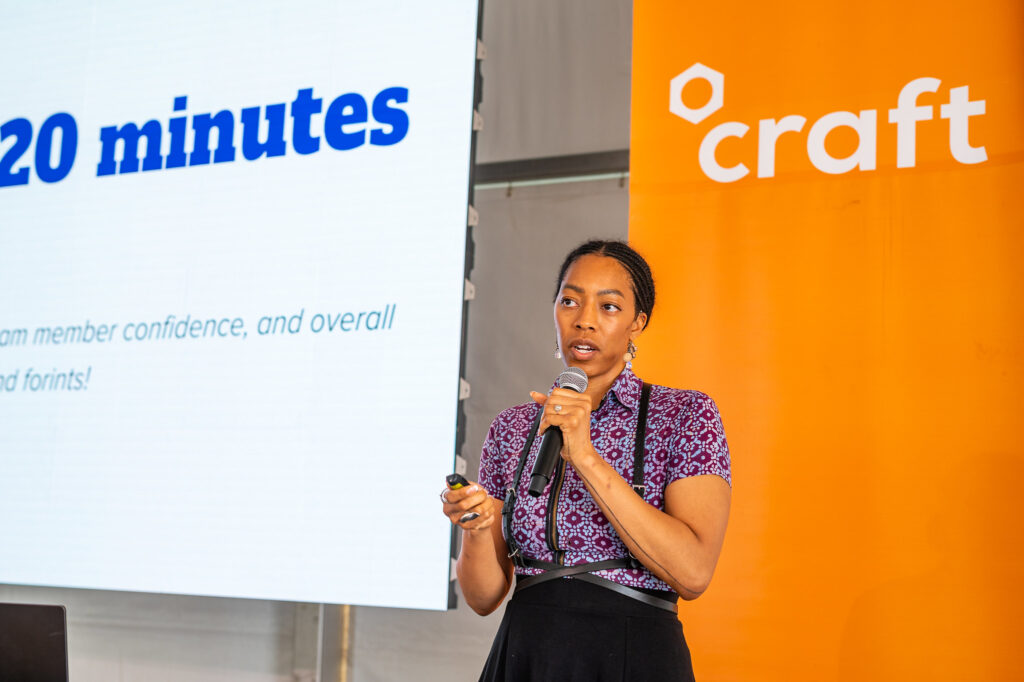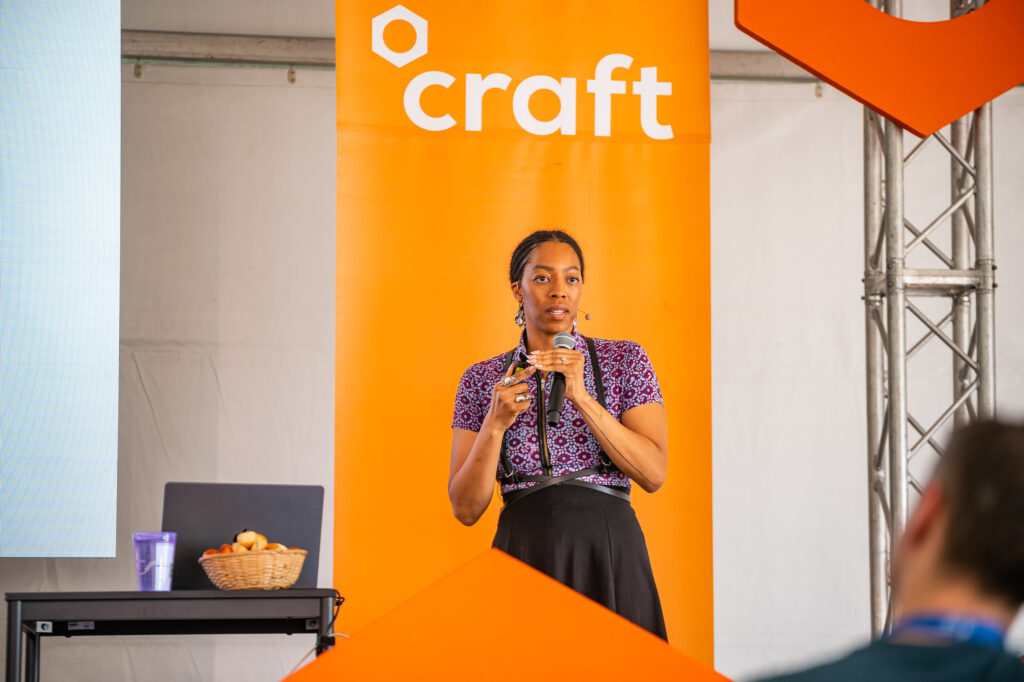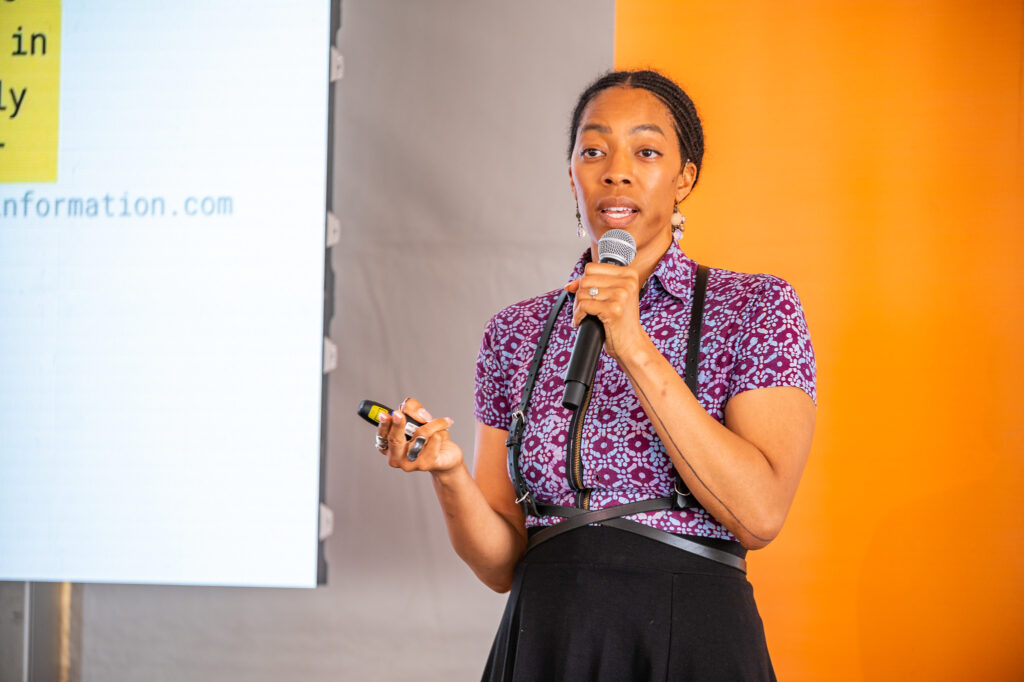Author: Réka Zsófia Buzás
In today’s fast-moving digital world, teams often rush to build – chasing deliverables without fully understanding the problem, the users, or what success actually looks like.
In her insightful talk at Craft Conference 2025, Chisara (Chisa) Nwabara challenged this pattern by redefining testing not as a QA task, but as a strategic mindset that can shape product thinking, improve collaboration, and prevent costly missteps.
This wasn’t about unit tests or coverage metrics. It was about thinking before doing – slowing down to go faster, using testing principles to create clarity, alignment, and real momentum in product and service development.
Make testing a strategic advantage
At its core, Chisara’s message was about understanding testing as a strategic tool: something to apply before code is written, before teams are spun up, and before resources are committed.
A testing mindset helps answer critical questions:
-
Are we solving the right problem?
-
What does success look like?
-
Who needs to be involved and when?
By shifting testing earlier, teams can avoid many of the pitfalls that derail projects later on.
Start with readiness: test before you build
Before building anything, ask: Are we actually ready?
“If you don’t have what you need, don’t start.”
Readiness isn’t just having a backlog. It’s having the right inputs. This is where the Definition of Ready comes in. Develop a checklist to ensure that:
-
The problem is clearly defined.
-
Assumptions and expected behaviors are known.
-
Dependencies are understood.
-
Stakeholders are aligned.
Without this, even the best-intentioned build can lead to rework, confusion, or outright failure.
Frame before building: define outcomes first
A key part of readiness is clarity on expected behaviors and outcomes. Chisara introduced the Given-When-Then model to structure that clarity:
-
Given: the context or state before an action
-
When: the action or trigger
-
Then: the expected result or outcome
If you can’t describe this clearly for a story or feature, you’re not ready to build. And if those outcomes don’t align with broader organizational goals, you may be building something that doesn’t matter.
Avoid common pitfalls with a testing mindset
Chisara highlighted several traps that derail projects – and how a testing mindset can prevent them:
-
Jumping to solutions too quickly
Starting with solutions feels fast but often sends teams in the wrong direction. Test and validate the problem first. -
Disconnected doers
When team members don’t see how their work connects to the mission, it’s a sign of weak framing. Good tests tie the “why” to every “what.” -
Confusing a brain dump with a plan
Listing tasks isn’t planning. Testing helps create structure, priorities, and shared understanding. -
Assuming shared understanding
If everyone doesn’t get it, you’re not ready. Alignment is part of testing.-
Who needs to be in the room?
-
What do they need?
-
How do you know they got it?
-
-
Doing too much, too fast
Tackling everything at once prevents learning. Ruthless prioritization is essential. One clear test at a time, not ten blurry ones. -
Building in the wrong order
If there’s no agreement on expectations, you’re on shaky ground. Define first. Test the understanding. Then proceed.
From chaos to clarity: a repeatable mindset
Chisara ended with a clear, practical sequence teams can adopt:
-
Start with an opportunity and a hypothesis
Don’t just build. Define what you’re trying to learn or prove. -
Ensure clarity and alignment
Everyone involved should understand what you’re doing, why it matters, and how success is defined. -
Prioritize and iterate
Focus on the most valuable thing first. Test it. Then move on. -
Follow the correct order of operations
Get agreements, definitions, and validations in place before you build.
Conclusion
Chisara’s talk was a powerful reminder: testing isn’t just about catching bugs – it’s about preventing waste. It’s about framing problems clearly, making deliberate decisions, and empowering teams to build with purpose.
When testing becomes a mindset applied throughout the entire lifecycle – not just the code – teams create stronger products, better collaborations, and far fewer surprises.
Slow down to test, and speed up delivery.


